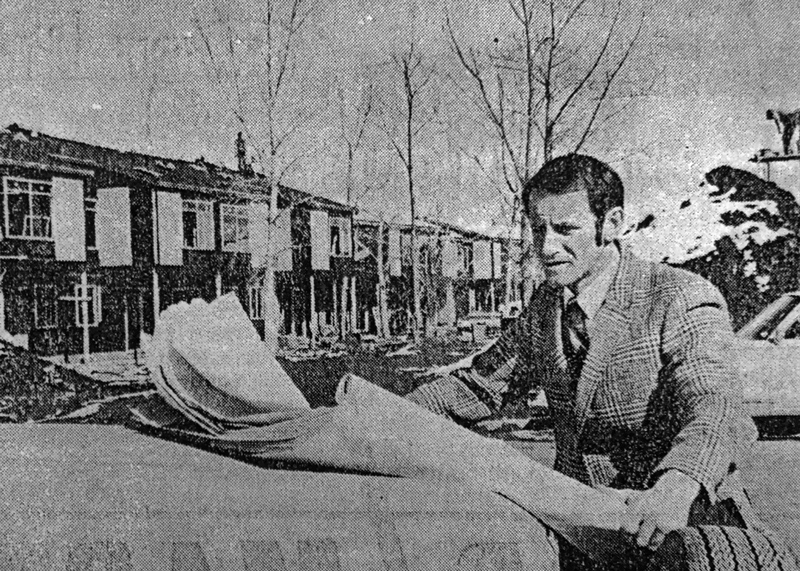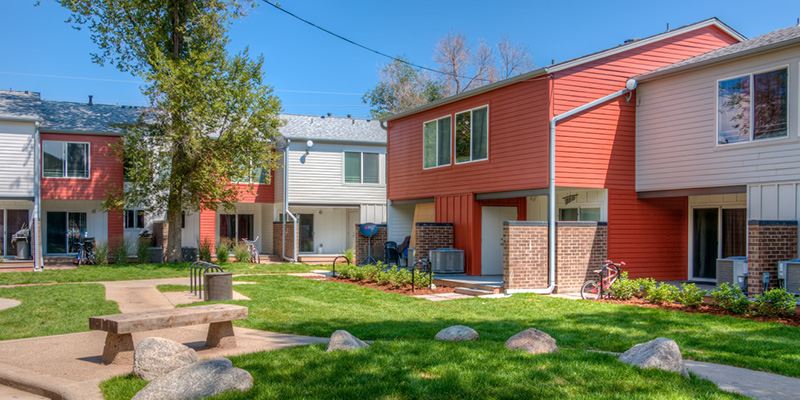The housing authority for the City of Boulder for over 55 years, Boulder Housing Partners builds, owns and manages quality affordable homes for low and moderate-income residents, while fostering thriving and sustainable Boulder communities.
Through Boulder Housing Partners’ award-winning communities and innovative programs, Boulder residents have access to over 1,800 affordable apartment homes, over 100 market-rate apartments and over 1,400 rental assistance vouchers.
Vision
To help create a diverse, inclusive, and sustainable Boulder.
Mission
To provide quality, affordable homes and foster thriving Boulder communities.
Core Beliefs
- We believe in the power of having a home.
- We believe in opportunity for all.
- We celebrate our diversity.
- We believe our work is one part of a broader solution to a thriving community.
- We believe in keeping our impact on the environment small.
- We believe in working as one team.
Strategies
Support Residents and Strengthen Communities
We provide high-quality customer service, treating all people with kindness, respect, and dignity. We foster partnerships with residents, participants, and local organizations to increase opportunities and strengthen the broader community.
Increase Affordable Housing Opportunities
We seek to meet the changing housing needs of our community. Our expertise is affordable and attainable rental housing. We work in collaboration with the City of Boulder to address community housing goals and provide opportunities that would not otherwise be available in the local market. We are agile and responsive to opportunities, providing permanently affordable homes through development, acquisition, and vouchers.
Steward our Resources Effectively
We are diligent stewards of public resources and champions for those who need them. We manage our resources through effective business practices, strategic asset management, community collaborations, environmental stewardship, and innovative systems that bring clarity and focus to our work.
Cultivate an Outstanding Workplace
We create a positive workplace culture, striving to attract and retain the best employees. We support wellness and balance in employees’ lives and we cultivate the creativity, passions, and unique skills of our team members.
Belonging & Culture
At Boulder Housing Partners, we believe our strength lies in the wide range of perspectives, backgrounds, and experiences that shape our team and community. As our workforce continues to grow and evolve, so does our commitment to fostering an environment where every individual feels seen, heard, and valued.
We are dedicated to building a workplace that reflects the richness of the community we serve. We welcome individuals from all walks of life, especially those whose voices have historically been overlooked or underrepresented. We actively work to ensure that our practices, policies, and culture promote fairness, mutual respect, and opportunity for all.
We value the unique viewpoints that come from differences in culture, identity, ability, age, life experience, and geography. We honor the full spectrum of who people are—recognizing that a wide variety of work styles, lived experiences, and ways of thinking contribute to greater creativity and innovation across our organization.
BHP remains proactive in cultivating an atmosphere of mutual respect and understanding. We confront bias, encourage open dialogue, and celebrate the richness of difference. At every level, we are building a culture where each person feels a sense of connection and belonging.
Our Roots
1966
Our Inception
On June 21, 1966, the Boulder City Council passed a resolution declaring the need for a public housing authority. Before the end of the year, the first Housing Authority Commissioners had been sworn in and the task of supplying affordable, high-quality housing to people from a diverse range of backgrounds, regardless of income, had begun. The group had a vision of building housing that would become part of a neighborhood, not a neighborhood in itself.
1970s
Our First Apartments
Nearly 450 apartment homes were constructed, acquired, or provided by the Housing Choice Voucher (previously Section 8) rental assistance program.
To help our low-income residents succeed, a network of services and activities called the Tenant Services Program was established.
The Resident Representative Council was founded to give residents a way to interact with the Housing Authority and to encourage a greater stake in the improvement of their own communities.

Photo Courtesy Daily Camera: John Hooyer, our first Executive Director, oversaw the construction of the Manhattan community in 1971
1980s
New Funding Partnerships
As federal assistance became scarcer, we found new funding in partnerships with other public agencies and the private sector. As a result, Bridgewalk’s 123 affordable and market-rate apartments were built via a public/private partnership. Working with the Center for People with Disabilities, Sage Court, a 19-apartment development for people with disabilities, was created.
1990s
Growth & Expansion
We continued to partner with others in the community, as well as to deepen our management capabilities and strategic planning. A mobile home park was converted to the award-winning Red Oak Park community, providing 59 permanently affordable homes, plus access to resident services.
2000s
New Name, Same Values
As Boulder’s real estate economy became more challenging, our success rarely resulted from a heroic individual effort, but from slow and careful nurturing of partner relationships. In 2001, we began the next chapter of our work as Boulder Housing Partners.
2010s
Innovating and Updating Our Inventory
In 2011, we became one of a select group of public housing authorities in the United States to participate in the prestigious Moving to Work (MTW) program, allowing flexibility and innovation in programming and use of federal funds.
In 2016, Project Renovate launched a $32-million initiative to preserve existing affordable housing. Six properties built in the 1970s and ‘80s were renovated inside and out. These 279 apartments, townhomes and single-family homes house Boulder’s most economically vulnerable families, seniors and individuals with disabilities.

The Manhattan community, Renovated in 2016
2020s
Meeting A Growing Need
At Boulder Housing Partners, we believe in the power of having a home. We continue to be an inclusive organization that operates creatively, decisively, and effectively, with strong and consistent values and an understanding that housing is as much about people as it is about place. With over 50 years in operation, we have built or redeveloped and now manage and own 33% of the total inventory of affordable housing in Boulder, making a strong contribution to City Council’s goal that 15% of all housing is permanently affordable.